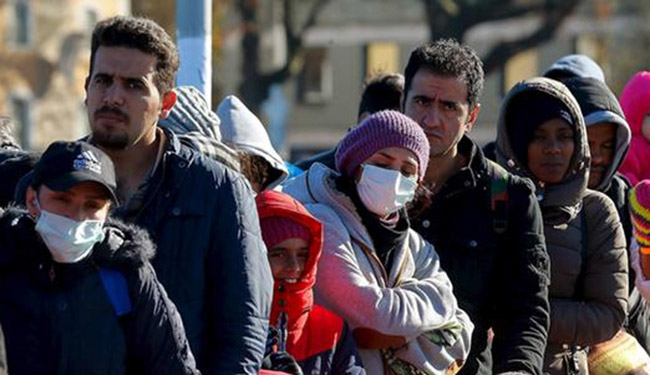Political and financial plights have forced Afghan people to seek refuge in foreign countries and migration remains a serious issue. The escalated violence and emergence of the self-styled Islamic State (IS) group on one hand, and the mass unemployment on the other hand narrowed down the opportunity for a safe and comfortable life. Being weary of war and violence, Afghan citizens head for developed countries in the hope of heaving a sigh of relief.
A rise in civilian fatalities is one of the main reasons behind the current exodus. As a result, on August 2015 United Nations found that in the first six months of the year Afghanistan witnessed a 23 percent spike in women's casualties and a 13 percent jump for children, compared with the previous year. Militancy and terrorist attacks in populated areas and major cities were described as the main causes of civilian casualties in 2015, underscoring a push by Taliban militants into urban centers “with a high likelihood of causing civilian harm”. Including Taliban-claimed attacks, the United Nations Assistance Mission in Afghanistan assigned responsibility for 62 per cent of total civilian casualties in 2015 to anti-government elements.
Afghan refugees in Iran and Pakistan constitute the largest and most protracted refugee population under UNHCR’s mandate. Up to January 01, 2014, Pakistan hosted 1,615,876 refugees, and Iran 840,158. The majority have been resident in both countries since fleeing the Soviet War in Afghanistan during the 1980s. Despite the success of voluntary repatriation programs both in Pakistan and Iran, many Afghan refugees have specific needs, vulnerabilities and protection concerns that prevent their return. In addition, the volatile security situation and human rights violations in Afghanistan remain an ongoing concern. In May 2012, Pakistan, Iran, Afghanistan and UNHCR adopted the Solutions Strategy for Afghan Refugees (SSAR). The SSAR outlines the need for increased voluntary repatriation, but also for enhanced resettlement as a means of international responsibility sharing, assistance to refugee affected and hosting areas and alternative stay arrangements for refugees in Pakistan. Resettlement is considered to be a strategic component of the SSAR and a vital tool for maintaining adequate protection space.
However, in December 2014, there was a terrorist attack on a school in Peshawar, and over 100 school children were killed. Following the attack, Afghan refugees in Pakistan began to encounter serious harassment and often were told to return to Afghanistan. There was a mass exodus of tens of thousands of refugees.
It is said that Pakistan’s constant demand for an early return of over 3 million refugees back to Afghanistan will be raised at the first World Humanitarian Summit in Turkey. The repatriation of the Afghan refugees will be discussed in the two-day summit – which is going to be organized at the initiative of UN Secretary General Ban Ki-moon on May 23.
The Istanbul summit will bring together governments, humanitarian organizations, people affected by humanitarian crises and new partners as well as the private sector to propose solutions to the most pressing challenges and set an agenda to keep humanitarian action fit for the future, UN sources revealed to the international media.
In June 2014, following military operations in North Waziristan Agency, Pakistan, more than 13,000 families crossed into Khost and Paktika provinces in south-eastern Afghanistan. Similarly, a large number of Afghan families were displaced internally due to escalated militancy and terrorist attacks in restive parts of the country. As a result, Afghan nation suffered great casualties last year due to the Taliban’s spring offensive and forced to abandon their homes. The Kunduz takeover in late September 2015 – which was the first time the Taliban fighters managed to capture a major city since 2001 – the heavy attacks in Sangin district of Helmand province and the terrorist activities, carried out by the self-styled Islamic State (IS) group, in Nangarhar caused internal displacement.
Despite repeated promises, the National Unity Government (NUG) failed to pave the way for returning Afghan refugees. The election was no more than a flash on the pan and people’s hope faded away with the rise of militancy, civilian casualties and mass unemployment, mainly following the establishment of NUG. Bearing the brunt of financial and security crises, a large number of youths immigrated to Europe. Scores of Afghan citizens have been living in international camps with the hope of getting foreign citizenship. But their fate is still unclear. What if they return to country after long waits?
Home » Opinion » Migration Crisis Should Be Tackled
Migration Crisis Should Be Tackled
| Hujjatullah Zia

